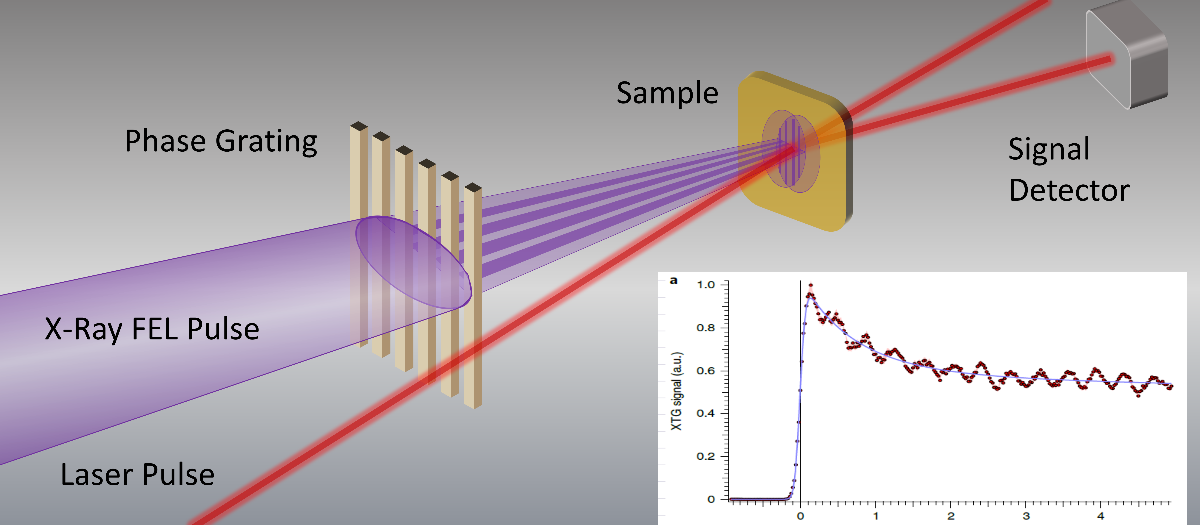
Excitation gratings created by interference of X-rays waves on a material allow investigating transport phenomena at the nanoscale.
To date, the modeling and understanding of transport phenomena at the nanoscale remains an open problem in materials science. Physical modeling fails to describe some of the most relevant transport phenomena when they are characterized by nanometric wavelengths, e.g. the propagation of very high frequency acoustic or phonon modes in the THz band, or thermal propagation on the nanoscale. Furthermore, the miniaturization of devices reached the nanoscale demanding an operational understanding of the different transport processes at this length scale.
The poor understanding of these phenomena is strongly due to the lack of experimental investigations capable of probing the transport processes on such a reduced length scale. This requires the use of short wavelength radiation, and in particular X-rays. The main challenge is to control multiple X-ray beams to generate a coherent interaction with matter at the nanoscale, to perform non-linear X-ray spectroscopy.
This was recently achieved by S.Catalini and R.Torre of the University of Florence, as members of an international consortium of researchers, using the ultrafast X-ray pulse generated by a free electron laser at the Paul Scherrer Institute, Switzerland. In a recent paper, published in Nature Photonics, this consortium succeeded in creating and using a 4-wave X-ray mixing technique with sub-picosecond time and sub-micrometric spatial resolutions; a transient periodicity grating of about 700 nm is generated in a germinated bismuth sample and its temporal decay is measured from femtoseconds to picoseconds of delay, revealing the phononic response of the material.
This is the first demonstration of a hard X-ray transient grating spectroscopy (XTG), and it opens the way to exciting and novel developments. Indeed, XTG is uniquely suited to investigate nanoscale transport phenomena in bulk and nanostructured materials, in disordered materials and even in liquids. Future experiments are deemed to open the field to applications in the characterization of materials, for nano-electronics, nano-optics and nano-magnetism.
